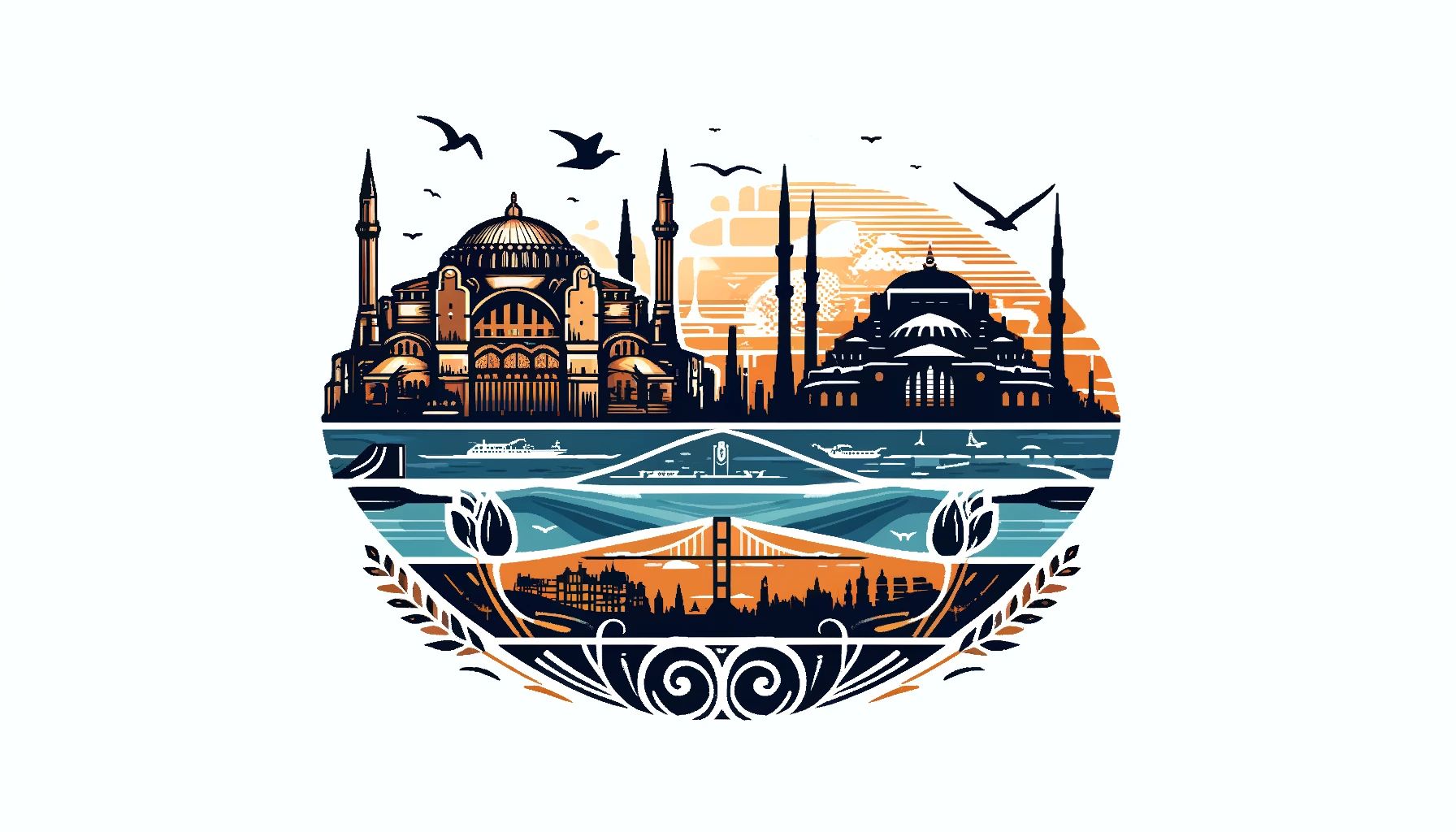Built in the 19th century, Dolmabahce Palace was once the main office for the rulers of the Ottoman Empire for over 50 years. Today, it’s known as Turkey’s largest palace, famous for its beautiful European and Ottoman architecture. The palace has rooms full of decorations made from glass, crystals, and gold, showcasing a mix of different styles including Ottoman, Baroque, and Neoclassical. This palace is a big part of Istanbul’s history and displays the city’s rich culture. Visitors come from all over to see its amazing architecture and learn about its past.
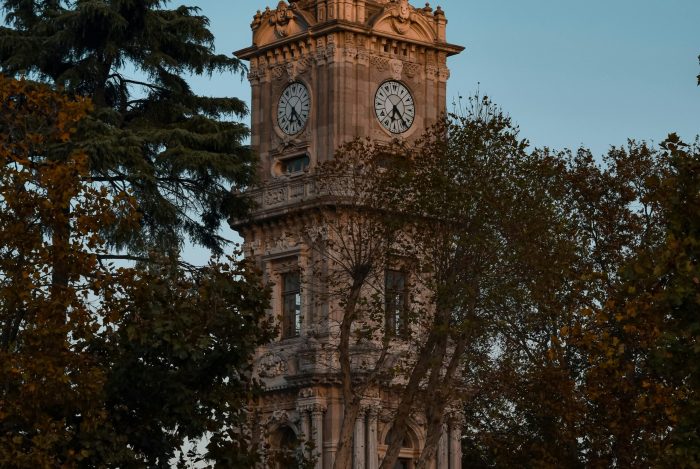
Built in 1890, the Clock Tower stands 27 meters tall and has been marking time for over a century. With its classic Ottoman design, you can climb to the top for amazing views of the palace and the Bosphorus Strait.
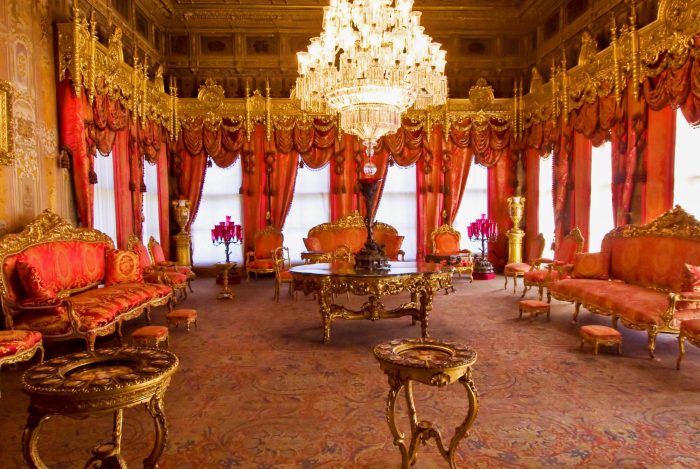
Step back to the 13th century with the striking Deesis Mosaic at Hagia Sophia, featuring Christ, Mary, and John the Baptist, noted for their vivid expressions and vibrant colors.
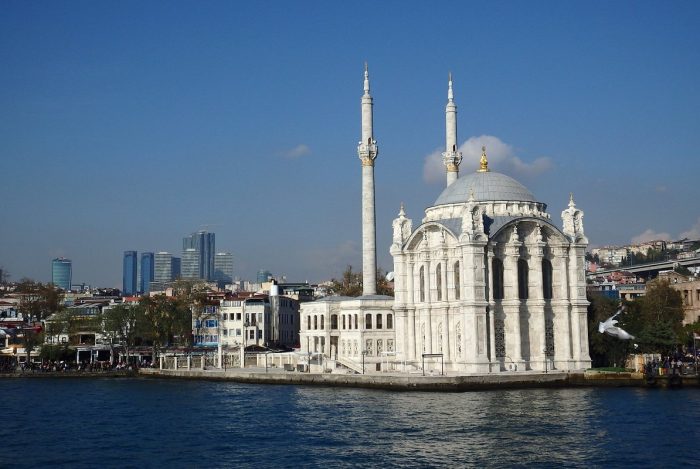
The Dolmabahce Mosque, completed in 1855, mixes Ottoman and Baroque styles. It's right in the palace complex and stands out with its beautiful design and detailed interior.
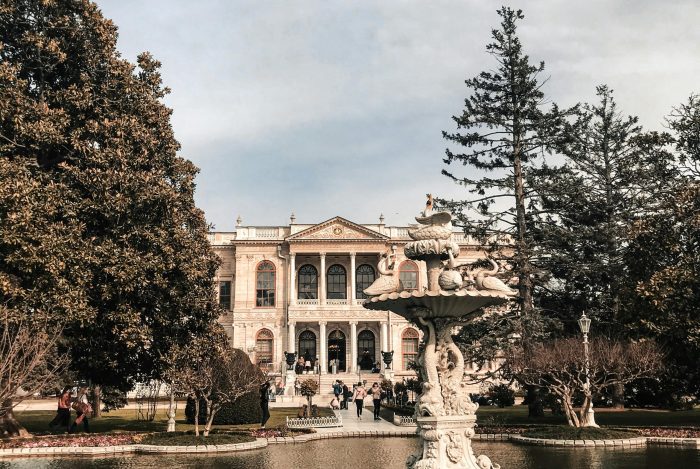
Next to the palace, this museum was once a mosque. It now holds a collection of 200 paintings that date from the 16th to the 20th centuries, featuring work by Turkish and international artists.
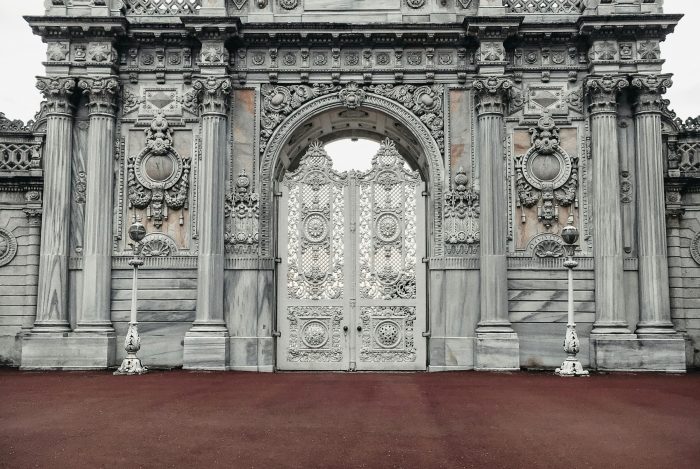
The palace gates are made of iron and beautifully decorated. They have seen many important historical events and are the traditional entrance to the palace.
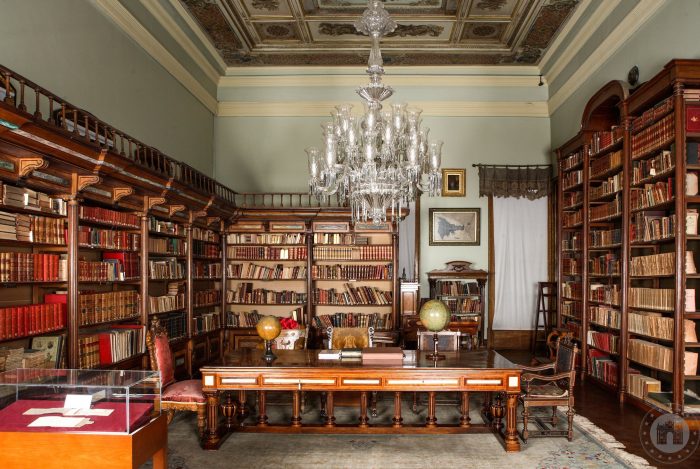
The library at the palace is home to over 25,000 books in many languages, including rare manuscripts and some of the last handwritten copies of the Quran.
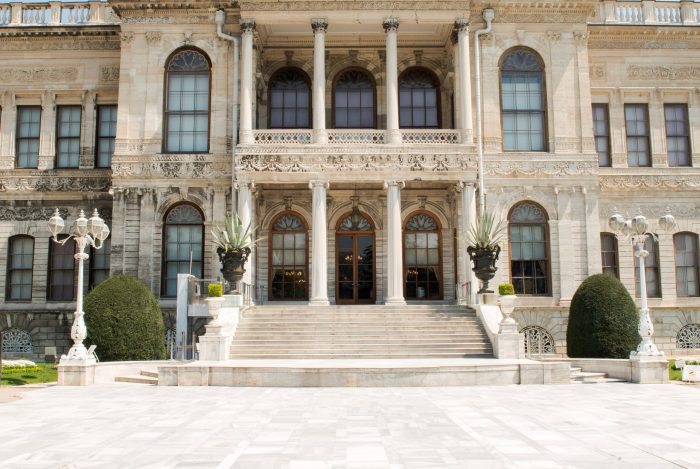
This grand hall was where the sultan met ambassadors and other important visitors. It’s a place that shows the power and elegance of the Ottoman Empire.
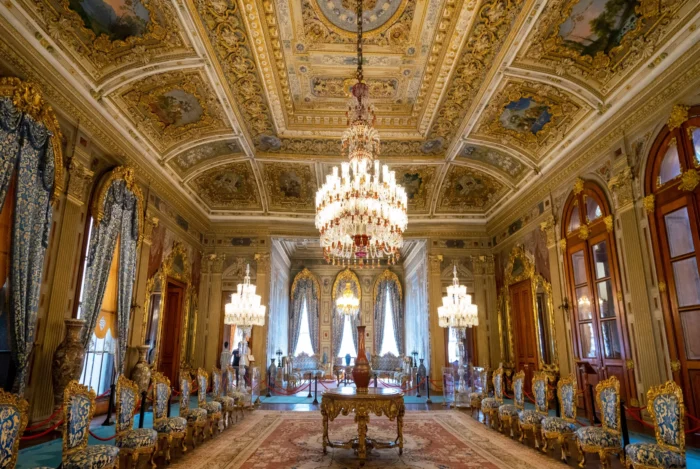
Used for receiving the sultan’s guests, this hall has a huge crystal chandelier and is full of beautiful carvings and paintings on the walls and ceiling.
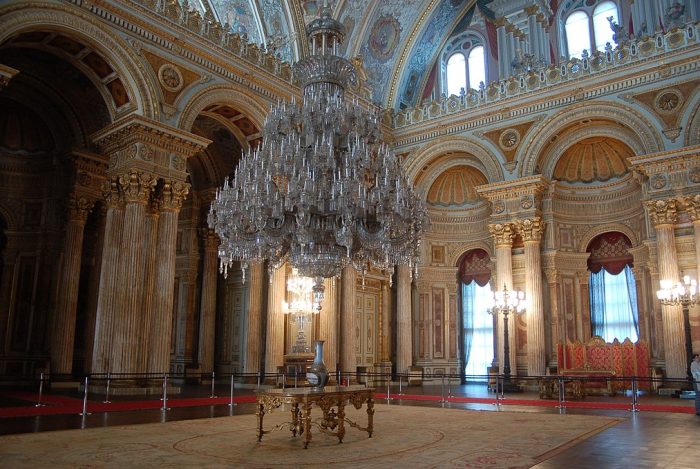
This hall was used for the biggest events in the empire, like the coronation of Sultan Abdul Hamid II. It’s known for its big dome, decorated with gold and beautiful paintings.
Dolmabahce Palace was constructed in 1843 by Sultan Abdulmecid I, who wanted a modern palace to replace the old Topkapi Palace as the government’s headquarters. The building took 13 years to complete and cost the equivalent of 35 tons of gold.
The palace was the site of significant events, including the signing of the Treaty of Lausanne in 1923, which defined modern Turkey’s borders. Dolmabahce is Turkey’s largest palace, with over 285 rooms and 46 halls. It was the royal residence until the end of the Ottoman Empire in 1922. Today, it’s a major tourist attraction and a symbol of Turkey’s rich history.
Visitors to the palace can enjoy its vast rooms and luxurious decor, getting a glimpse of the royal lifestyle and the empire’s grandeur.
Who Built Dolmabahce Palace?
Dolmabahce Palace, an iconic symbol of Ottoman grandeur in Istanbul, was brought to life through the collaboration of Sultan Abdulmecid I and the Balyan architects. Starting in 1843, they combined Ottoman, European, and neoclassical styles to construct this masterpiece in just 13 years. Today, visitors can admire their remarkable teamwork and the enduring legacy they’ve left behind.
Dolmabahce Palace blends Eastern and Western styles beautifully. Inside, the Crystal Staircase sparkles with Baccarat crystals. Admire artworks like the Fatih Sultan Mehmet Bridge painting. And outside, enjoy the gardens with their Bosphorus River views. Come see the charm of Dolmabahce Palace!
Dolmabahçe Palace is located along the Bosphorus Strait in the Beşiktaş district of Istanbul, Turkey.
Address: Vişnezade, Dolmabahçe Cd., 34357 Beşiktaş/İstanbul
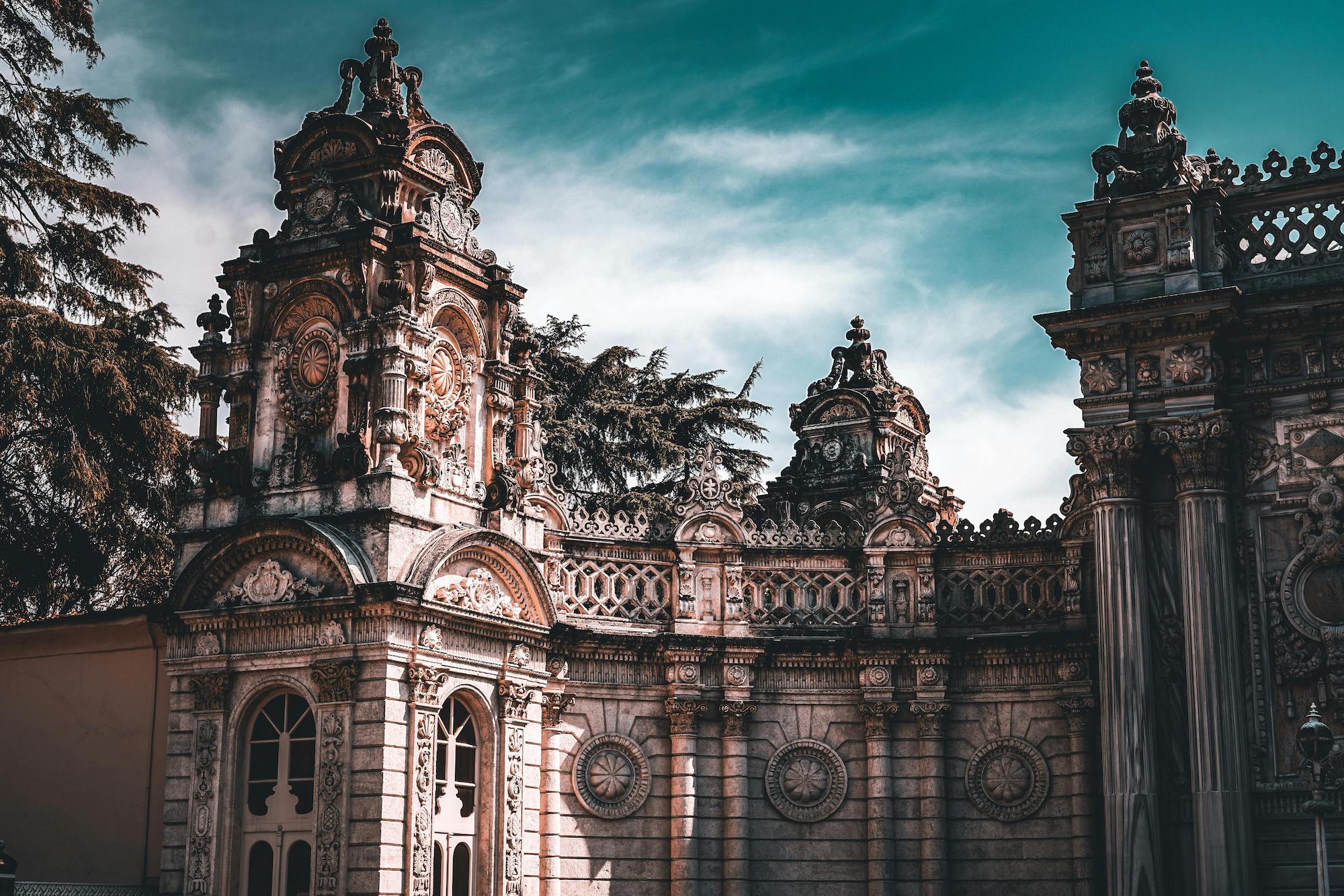 • By Bus: Take any bus to Beşiktaş, then walk to the palace.
• By Bus: Take any bus to Beşiktaş, then walk to the palace.
• By Metro: Take the M2 line to Taksim, then walk or transfer to a bus
• By Tram: Take the T1 line to Kabataş, then walk to the palace.
• By Driving: Drive to Beşiktaş, and use available parking nearby.
Opening Times: Daily operations from 09:00 to 18:00 except on mondays.
Suggested Duration: 1 to 2 hours
Optimal Visit Times: Early morning or late afternoon for lighter crowds and stunning natural light effects on the dome.
Optimal Visit Times: Early morning or late afternoon for lighter crowds and stunning natural light effects on the palace.
Weekdays over Weekends and Holidays: To avoid the crowds, visiting during weekdays is recommended.
Off-season Months: The months from October to April offer a quieter experience as the tourist crowds are thinner.
Tips while visiting:
Built in the mid-19th century, Dolmabahce Palace was the Ottoman Empire’s main administrative center, renowned for its stunning blend of European and Ottoman architecture, along with lavish interiors. Today, it stands as a major cultural and historical attraction in Istanbul.
The name „Dolmabahce“ combines two Turkish words: „dolma“ meaning filled and „bahçe“ meaning garden, thus translating to „filled garden.“ This name reflects the palace’s origin as a bay filled in during the 17th century to create royal gardens, which later evolved into the grand Dolmabahçe Palace complex.
Dolmabahce Palace is famed for its historical significance, luxurious interiors, and as the design work of Sultan Abdulmecid I. It attracts thousands of tourists annually who come to admire its grandeur and exquisite design elements, including the world’s largest Bohemian crystal chandelier and a 150-year-old bear skin, gifts from Queen Victoria.
Ticket prices for Dolmabahce Palace start at approximately €29. Available options include skip-the-line access, guided tours, and combo packages that come with audio guides to enhance the visiting experience.
Visitors to Dolmabahce Palace can explore its famous halls like the Muayede Hall, adorned with lavish gold and crystal decorations, enjoy the exquisite interiors filled with historic artifacts, and relax in the beautifully landscaped gardens while admiring the views of the Bosphorus.
Dolmabahce Palace was designed by the renowned Armenian architects, Garabet and Nigogayos Balyan. They were commissioned by Sultan Abdulmecid I and combined Ottoman, European, and neoclassical architectural styles to create this iconic landmark.
Construction of Dolmabahce Palace began in 1843 and was completed in 1856. The construction reflected a blend of various architectural styles, representing a shift towards modernity in the Ottoman architectural tradition. Look up the history.
Dolmabahce Palace was built to serve as the new, modern administrative center of the Ottoman Empire, replacing the older Topkapi Palace. It symbolized the empire’s modernization efforts and served as a residence for the sultans and their courts.
Dolmabahce Palace is situated at Visnezade, Dolmabahce Cd., 34357 Besiktas, Istanbul, Turkey. This location places it right along the European shore of the Bosphorus Strait.
The easiest way to reach Dolmabahce Palace is by taking the Marmaray train or the T1 tram to Istanbul and then walking a short distance from the station. Local buses also stop nearby, making it accessible from various parts of the city. Look up the directions.
Dolmabahce Palace is open from 9:00 to 18:00, Tuesday through Sunday. It remains closed on Mondays and on certain public holidays. Here the opening hours.
There are two main entrances to Dolmabahce Palace: the Imperial Gate, which is wheelchair accessible, and the Treasury Gate, both of which offer unique perspectives of the palace’s grand architecture.
A typical visit to Dolmabahce Palace lasts about 2 hours, allowing ample time to fully appreciate the interiors, explore the halls, and enjoy the gardens.
Absolutely, Dolmabahce Palace is a must-visit for anyone interested in history, architecture, and art. It offers a rich insight into the opulent lifestyle of the Ottoman elite and provides stunning views of Istanbul and the Bosphorus.
